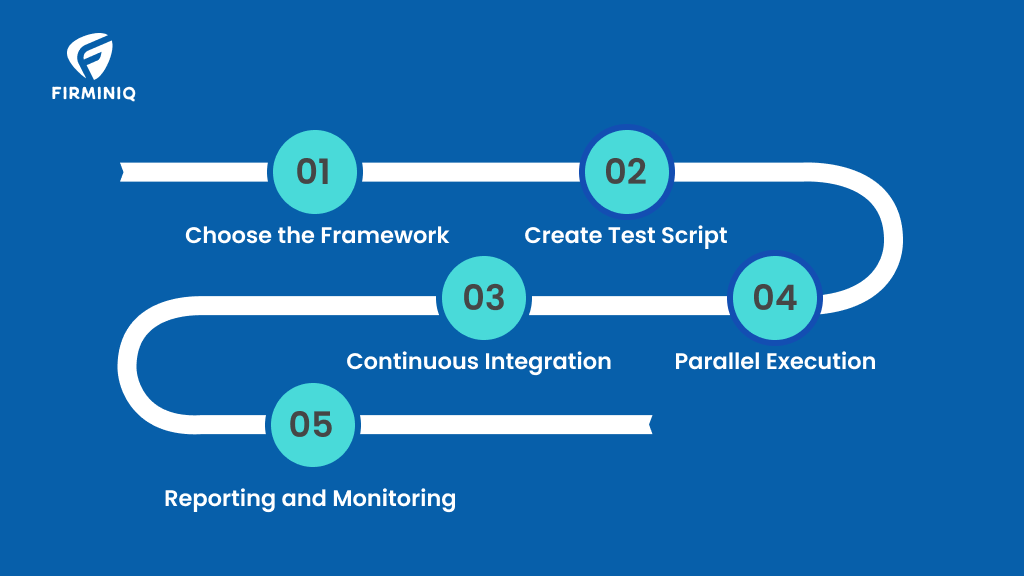Connected health applications, EHR (Electronic Health Records) systems, and other platforms play a pivotal role in transforming how healthcare is delivered and managed. These platforms bring more convenience and efficiency to healthcare, streamlining communication between patients and care providers and monitoring health with ease.
Yet, amid transformative changes in healthcare, the patient-sensitive data and complex landscape underscore the necessity of rigorous testing and validation in connected healthcare.
Manual testing is often labor-intensive and susceptible to human errors, making it a time-consuming process. Automation testing, on the other hand, represents a significant shift that strongly emphasizes quality assurance, while enhancing speed.
“The global automation testing market size is projected to grow from $15.39 billion in 2023 to $51.26 billion by 2030, at a CAGR of 18.8%.”- Fortune Business Insights. The stats clearly depict the paradigm shift toward automation testing.
Automation testing has been used as a powerful tool for improving testing efficiency and accuracy. Technological advancements have intensified its significance. Automation enables quick execution of test cases, comprehensive coverage, and detection of issues. In the context of Continuous Integration and Continuous Delivery (CI/CD), this speed is essential.
Automation testing empowers healthcare organizations with more data security, patient safety, reliability, and regulatory compliance. Rapid implementation through automation of is one of a transformative approach to connected app testing that is reshaping how we ensure quality and performance. Let us find out below what is rapid implementation strategy and what all components it includes.
Rapid Implementation via Test Automation Strategy
Rapid implementation strategy involves swift integration of automation tools and practices into the testing process to accelerate testing cycles and improve the overall quality of healthcare applications. The key components include:

1. Choose the Framework
Choose the test automation framework as per the requirement of the connected healthcare application. The framework must be scalable to accommodate the multiplying platforms, should increase the overall test efficiency, enhance speed to market, and more. Explore how our proprietary test automation accelerator – QAGo can meet all these demands seamlessly.
2. Create Test Script
Creating effective test scripts can ensure long term automation success. Quality test scripts can ensure long term automation success, as it serves the foundation of automation testing.
3. Continuous Integration
Integrating test automation in CI/CD pipeline ensures that the tests are automatically run with every change in the code. It offers early feedback to the developers and resolution too.
4. Parallel Execution
Parallel execution of the tests across multiple devices and platforms accelerates the testing process while reducing the bottlenecks.
5. Reporting and Monitoring
Utilize robust reporting and monitoring tools to track progress throughout the testing process. The tools allow teams to track progress simultaneously and identify areas that need attention.
The Need for Rapid Implementation via Automation Testing
Connected healthcare applications have become a ubiquitous need and to ensure the applications are working seamlessly across devices, rapid implementation via automation is the key that can address all the challenges. Let us delve deeper and understand the need for rapid implementation via automation testing.
1. Helps Accelerate Release Cycle
Rapid releases are essential in the age of (CI/CD). Automation testing significantly contributes to an accelerated release cycle while offering faster execution, parallel testing, seamless integration with CI/CD, instant feedback, reduced manual intervention, and more.
2. Offers Consistency Across Devices
Connected healthcare applications are used on different devices like smartphones, tablets, wearables, and more. Therefore, it is vital to ensure consistent functionality and user experience across the devices and it is a complex challenge. Automation testing helps identify device-specific issues and ensures the healthcare applications can perform reliably, no matter what devices are used.
3. Amplify Test Coverage
Enhancing test coverage is a crucial aspect of automation testing, especially in healthcare where precision and thoroughness are essential. Automation testing allows comprehensive test coverage and executes test cases that are repetitive and time consuming. It also helps identify vulnerabilities, compliance issues, and performance bottlenecks.
4. Increase Accuracy and Reliability
While manual testing ensures software quality, it also introduces the potential for mistakes due to the involvement of human testers.
Automation testing eradicates the risk as it executes tests with precision and efficiency. The tests can validate complex calculations and data transformations with a high degree of precision. Enhanced accuracy reduces the chances of defect slipping and ensures that healthcare applications function accurately, offering error-free data and reliable outcomes for patient care.
5. Supports Regulatory Compliance
For industries like healthcare, strict compliance regulations are in place to maintain legal and ethical standards. Regulations like HIPAA (Health Insurance Portability and Accountability Act) and GDPR (General Data Protection Regulation) are a few of the regulations. Automation testing can be tailored to verify compliance with these regulations consistently. It helps organizations avoid any costly compliance violations and legal issues while ensuring to safeguard patient information and privacy.
6. Enables Continuous Monitoring
There is a need for continuous monitoring for healthcare applications to detect and address issues in real time. Automation testing can be integrated into monitoring systems, that offer problem detection and resolution at the earlier stages. This continuous testing and monitoring ensure that the application is responsive, secure to use for patients and other stakeholders too.
Concluding Thoughts
In the realm of connected healthcare applications, the need for rapid implementation via automation testing is vital. It not only accelerates the release cycle but ensures consistency, boosts test coverage, increases reliability, continuous monitoring and ensures regulatory compliance.
Embracing automation testing is essential for delivering high-quality healthcare solutions that meet the evolving needs of different stakeholders while staying competitive in a rapidly changing industry.







